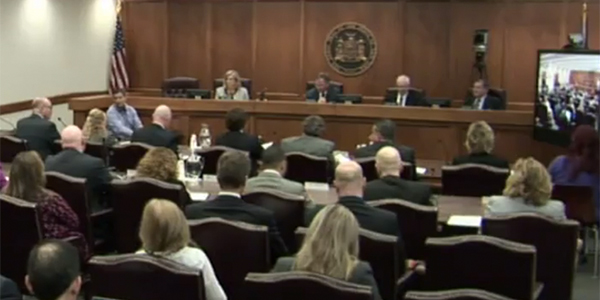By Michael Kuser
The New York Public Service Commission on Thursday continued to tweak compensation and billing for distributed energy resources, adjusting the structure of existing standby and buyback service rates and extending standby rate exemptions for two years (Case 15-E-0751).
The PSC’s order modifies rates “to more accurately reflect costs and benefits and to ensure that those rates are available to all interested ratepayers.”
“Standby service rates generally apply to customers who have on-site generation that serves much of their load but still depend on the utility to provide partial or backup service,” said Ted Kelly, assistant counsel for the Department of Public Service. The buyback rates determine the price customers receive for selling excess energy back into the grid.
“With interval metering becoming much more widely available due to the rollout of advanced metering infrastructure (AMI) throughout New York state, mass market standby service rates no longer need to be limited to flat fees and volumetric energy usage,” the PSC said. “Rather, rates for mass-market standby service can be measured and billed on the basis of demand in the same manner as the standby service rates applicable to larger customers.”
The order requires that all customers be eligible to opt into a demand-based rate option, irrespective of whether they have on-site DERs. It also requires greater granularity by using off-peak, on-peak and super-peak charge components, and allows the load of multiple customers in multiple buildings to be offset by a common generator.
“This is obviously a complex topic,” PSC Chair John Rhodes said. “Though a complicated subject, this is a very practical approach going forward.”
Commissioner Gregg Sayre said he was “comfortable establishing a rate design that more closely tracks the cost of service.”
“Standby rates have been controversial and hotly debated,” said Commissioner Diane Burman, who concurred in the approval. “I do think we were overly ambitious in 2015 in thinking that it could happen overnight and that the signal was we were ready to go.”
The order also modifies the design and administration of buyback service tariffs to eliminate or reduce barriers to deployment of DERs, and clarifies the application of grid access demand charges for energy storage systems.
The commission also voted unanimously to continue existing statewide exemptions from standby rates, and to extend the in-service date deadline for eligible DERs until May 31, 2021 (Case 19-E-0079).
These exemptions apply to certain DERs with a capacity of 1 MW or less, including fuel cells, wind, solar thermal, solar photovoltaic, biomass, tidal, geothermal, methane waste-powered resources, and efficient combined heat and power projects, the order said.
New York utilities must implement the rule changes effective July 1.
Grid Prepared for Summer
DPS staff presented the commission a report on summer electricity preparedness that forecasts a 1 to 3% decline in energy prices compared with last summer, depending on load zone and weather conditions.
“This is very comforting for New Yorkers,” Rhodes said.
The state bases its energy price forecasts on futures trading at the New York Mercantile Exchange, and the commission said that financial hedging by utilities will also reduce any price increases this summer.
“The big driving factor of course is ICAP [installed capacity], which tends to be fairly stably high in the summer downstate and, year after year, quite low upstate,” said Warren Myers, DPS director of market and regulatory economics. “And with respect to delivery charges, those, by their design through rate cases, are very stable.”
New York has sufficient generating capacity resources to supply expected customer demands and all of the state’s electric utilities are prepared to serve those expected customer demands, the report said. Peak load this summer is forecast to be 32,382 MW, down slightly from last year.









